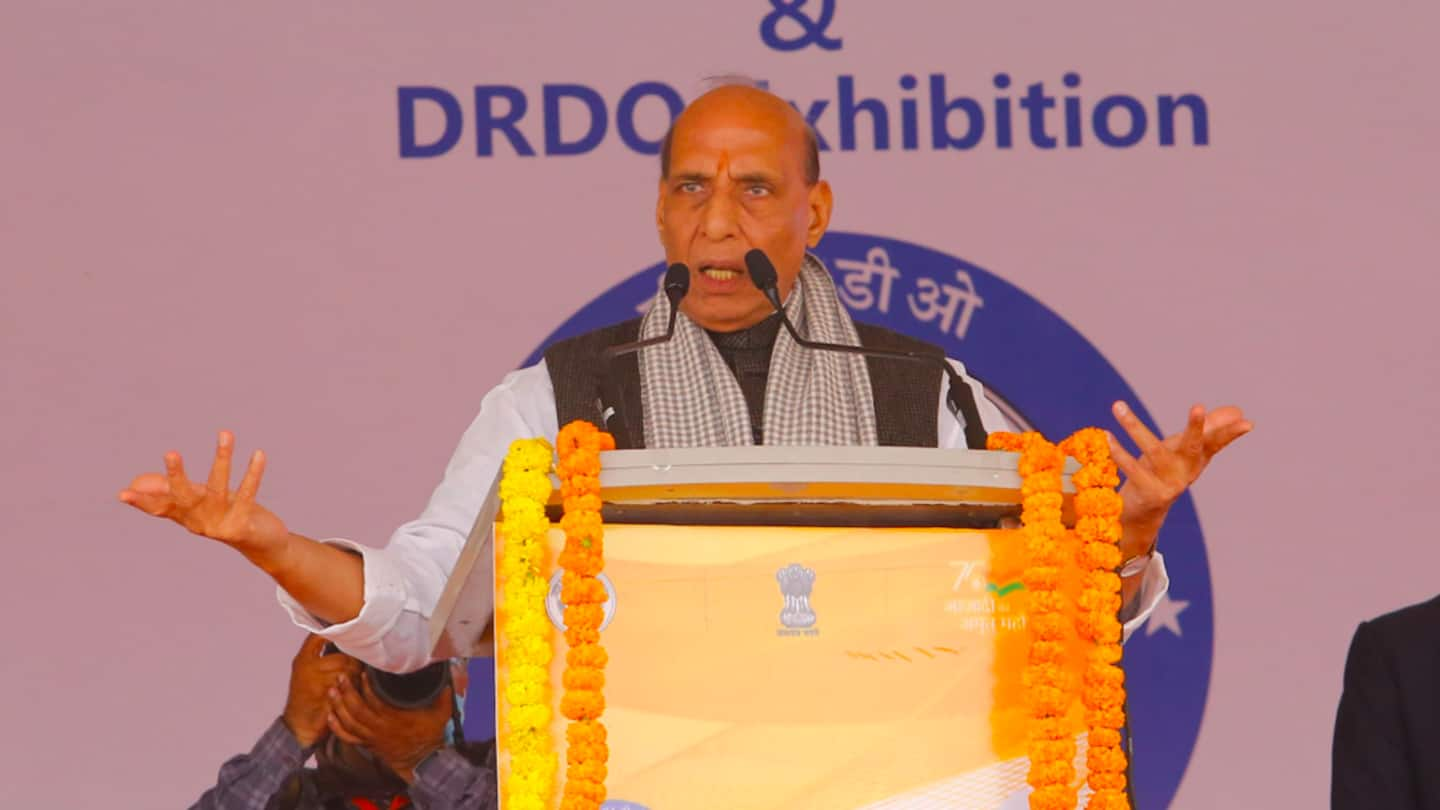
Manufacturing BrahMos so no nation dares attack India: Rajnath Singh
What's the story
Defense Minister Rajnath Singh on Sunday laid the foundation stone for the Defence Research and Development Organization's (DRDO) BrahMos manufacturing center in Lucknow.
No other country will dare to cast an evil eye on India if it manufactures BrahMos missiles, Singh said.
Earlier, Uttar Pradesh Chief Minister Yogi Adityanath had said the state would become a defense manufacturing hub.
Context
Why does it matter?
BrahMos is an Indian-Russian joint project that defines the strategic partnership between both nations.
Incidentally, India's relationship with its neighbors, especially China and Pakistan, has deteriorated of late.
India has consistently bolstered its defense mechanisms since the Bharatiya Janta Party (BJP) took office.
In September 2016 and February 2019, India had even conducted cross-border strikes in Pakistan following terror attacks in Uri and Pulwama.
Quote
'No intention to attack any country'
Singh said that the missiles are not being built to attack any country.
"In history, we have never encroached on any neighboring country land or invaded any nation," he said.
"We want to Manufacture Brahmos just to ensure that no nations with ill intentions dare to attack India and we proved our deterrence power in Uri and Pulwama," he said.
Details
What's the new manufacturing center equipped with?
Apart from the DRDO BrahMos Manufacturing Center, Singh also laid the foundation stone of the Defence Technologies and Test Centre.
The BrahMos Manufacturing Center is a 200-acre modern, state-of-the-art facility.
The unit will comprise six sub-centers: deep-tech innovation and startup incubation center; design and simulation center; testing and evaluation center; center for industry 4.0/digital manufacturing; skill-development center; and business development center.
Information
Over 15,000 new jobs
The BrahMos project is expected to create 5,500 new jobs, with an additional 10,000 jobs created by the auxiliary supply chain. The manufacturing unit is scheduled to be ready in the next two to three years, according to the ministry.